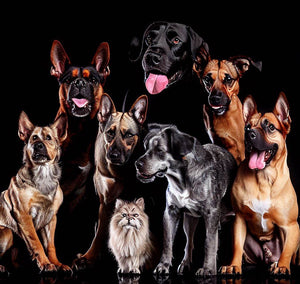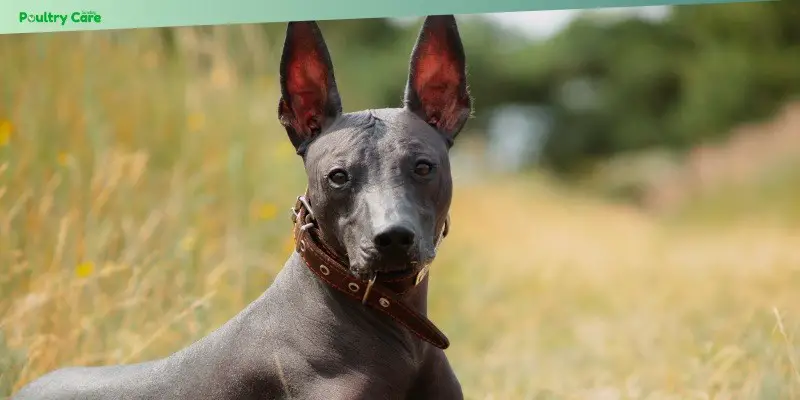Dogs come in many shapes and sizes. Some breeds are so rare, you’ve likely never heard of them.
In this blog post, we will explore some of these lesser-known dog breeds. These unique canines have fascinating histories and characteristics that set them apart. Whether you’re a dog lover or just curious, these rare breeds are sure to intrigue you.
Discover the charm and appeal of these uncommon dogs, and you may find yourself falling in love with a new favorite. Let’s dive into the world of rare dog breeds and learn what makes them so special.
Ancient Dog Breeds
Imagine walking through history with a furry companion by your side, unchanged by time and still holding secrets of the past. Ancient dog breeds offer you just that—a chance to connect with history through their lineage. These breeds have been around for thousands of years, carrying stories and traits that make them truly special and often overlooked in the modern world.
Origins
Ancient dog breeds often trace their lineage back to regions with rich cultural histories. The Saluki, for example, hails from Egypt, known as the “Royal Dog of Egypt” and has been depicted in ancient Egyptian tombs. The Afghan Hound originated in the mountainous regions of Afghanistan, celebrated for its beauty and hunting prowess. These dogs were not just pets; they played significant roles in their societies, from hunting to being treasured companions.
Characteristics
What makes ancient dog breeds fascinating is their unique characteristics. Their appearance often reflects their historical roles. Take the Basenji, known for its lack of bark, which made it stealthy for hunting in the African forests. The Chow Chow’s lion-like mane and blue-black tongue are distinctive features that set it apart. These breeds often have a strong, independent nature, yet remain loyal to their humans.
Have you ever wondered why some breeds look so different from others? It’s intriguing how these ancient dogs have retained their original features over centuries. Their resilience and ability to adapt to different environments while maintaining their distinct traits are truly remarkable.
Consider adding an ancient dog breed to your family. You’re not just getting a pet; you’re gaining a piece of history, a loyal friend, and a conversation starter. Which ancient breed would you choose to explore the past with? Let their stories inspire your journey.

Credit: www.youtube.com
Exotic Canine Varieties
Dogs come in various shapes and sizes. Some breeds are so rare that many have never heard of them. These exotic canine varieties possess unique traits and rich histories. Their distinct features and habitats make them fascinating.
Distinct Features
Rare dog breeds boast one-of-a-kind characteristics. The Thai Ridgeback, for instance, has a distinctive ridge of hair along its back. The Catahoula Leopard Dog sports a striking spotted coat. Each breed’s appearance sets it apart.
Some rare breeds have peculiar physical traits. The Xoloitzcuintli, or Mexican Hairless Dog, is known for its lack of fur. Another example is the Bergamasco Shepherd, which has long, matted hair that forms natural dreadlocks.
Habitat
These rare breeds often come from specific regions. The Azawakh, a sighthound, originates from West Africa. It thrives in hot, arid climates. The Norwegian Lundehund, from Norway, is accustomed to rocky coastal areas. Its environment shaped its unique traits.
Some breeds adapt to varied habitats. The Karelian Bear Dog from Finland hunts in dense forests. It excels in cold, harsh conditions. These dogs’ habitats influence their behaviors and abilities.
Rare Working Dogs
Rare working dogs are a fascinating group of canines that most people aren’t familiar with. These dogs are not just pets; they have unique roles that often require specialized training. Their dedication and skill are impressive, making them valuable in various tasks.
Roles
Rare working dogs can perform tasks that many other dogs can’t. They often assist in search and rescue missions, herding livestock, or even detecting specific scents. Their abilities are honed through rigorous training.
One example is the Lagotto Romagnolo, known for its talent in truffle hunting. These dogs have a sharp sense of smell and can find truffles buried deep underground. It’s fascinating to watch them work, as they show incredible focus and determination.
Another rare working dog is the Norwegian Lundehund. This breed has extra toes and a flexible neck, making it perfect for hunting puffins on rocky cliffs. Their unique physical traits give them advantages that other dogs don’t have.
Training
Training rare working dogs requires patience and consistency. Each breed has its own set of skills that need to be developed. It’s not just about teaching them commands; it’s about harnessing their natural instincts.
My friend once trained a Belgian Laekenois for sheep herding. The dog learned to move sheep efficiently, responding to subtle cues. Watching them work together was a testament to the power of dedicated training.
If you’re considering training a rare working dog, start with basic obedience. Gradually introduce tasks that align with their natural abilities. Remember, consistency is key.
Have you ever wondered if your dog could be trained to perform such specialized tasks? It might surprise you how capable they can be with the right guidance.

Credit: lordofthepets.com
Preserving Rare Breeds
Preserving rare dog breeds is crucial for maintaining genetic diversity. These unique breeds often have distinctive traits that are worth saving. Without dedicated efforts, these breeds may vanish forever. Let’s explore the efforts and challenges involved in preserving rare dog breeds.
Conservation Efforts
Non-profit organizations play a big role in preserving rare dog breeds. They work to promote awareness and educate the public. Breeding programs are established to maintain healthy populations. These programs ensure that rare breeds continue to exist.
Another key effort is hosting dog shows and events. These events showcase rare breeds and attract potential adopters. They also help fundraise for conservation programs. Many enthusiasts volunteer their time and resources to support these efforts.
Challenges
One major challenge is the small gene pool. Limited genetic diversity can lead to health problems. This makes breeding programs more complex. Finding suitable mates becomes a difficult task.
Another challenge is the lack of awareness. Many people do not know these rare breeds exist. This lack of knowledge makes it hard to find homes for these dogs. It also reduces financial support for conservation efforts.
Finally, the high cost is a significant barrier. Maintaining breeding programs and health care for these dogs is expensive. Funding is often limited, making it hard to sustain these programs long-term.

Credit: furlyfe.com
Frequently Asked Questions
What Is The 1 Rarest Dog Breed?
The rarest dog breed is the Norwegian Lundehund. Known for its unique physical traits and historical significance, it’s incredibly rare.
What Is The Most Forgotten Dog Breed?
The Otterhound is often considered the most forgotten dog breed. This rare breed has unique characteristics and a friendly nature.
What Dog Cost $10,000 Dollars?
The Tibetan Mastiff can cost $10,000. This rare breed is known for its impressive size and protective nature.
What Is The #1 Smartest Dog?
The Border Collie is widely regarded as the #1 smartest dog. It excels in obedience, agility, and problem-solving.
What Are Some Rare Dog Breeds?
Some rare dog breeds include the Azawakh, Mudi, and Lagotto Romagnolo. Unique and lesser-known.
Conclusion
Exploring rare dog breeds introduces us to unique canine companions. These breeds often have fascinating histories and distinct traits. They can bring joy and new experiences to your life. Learning about them expands our understanding of the dog world. Consider researching more about these breeds for a potential new pet.
Meeting these rare breeds can be quite an adventure. Discovering new canine friends enriches your bond with dogs. Share your findings with fellow dog lovers. Enjoy the journey of discovering rare dog breeds.
Last Updated on May 11, 2025 by Pauline G. Carter

